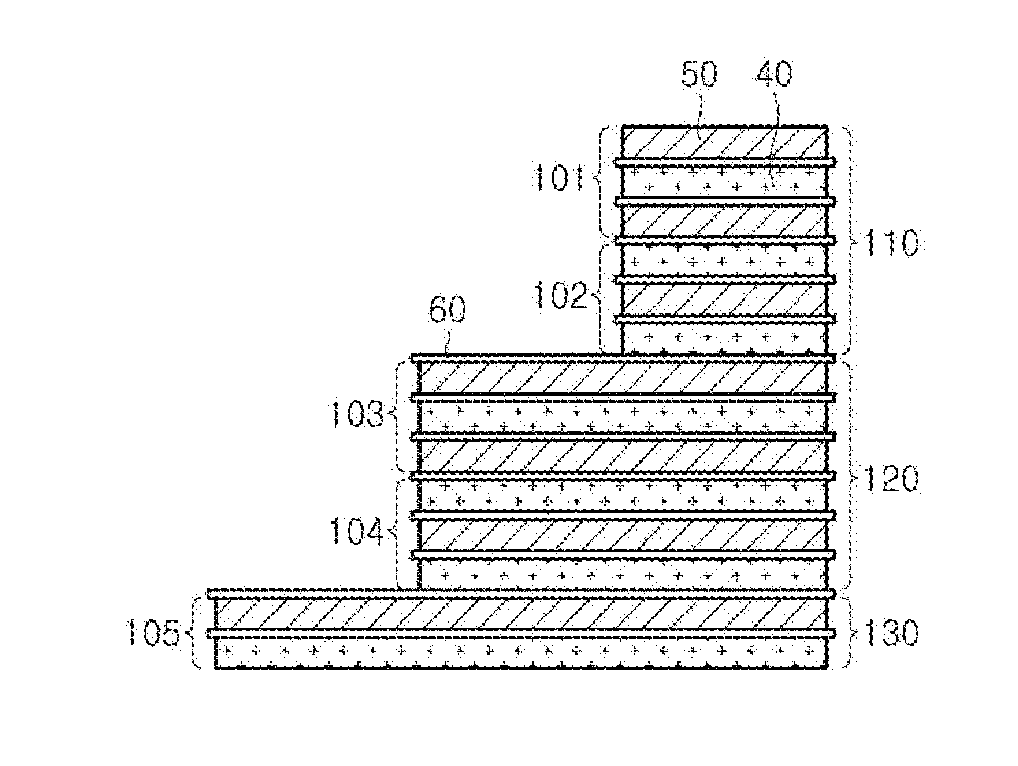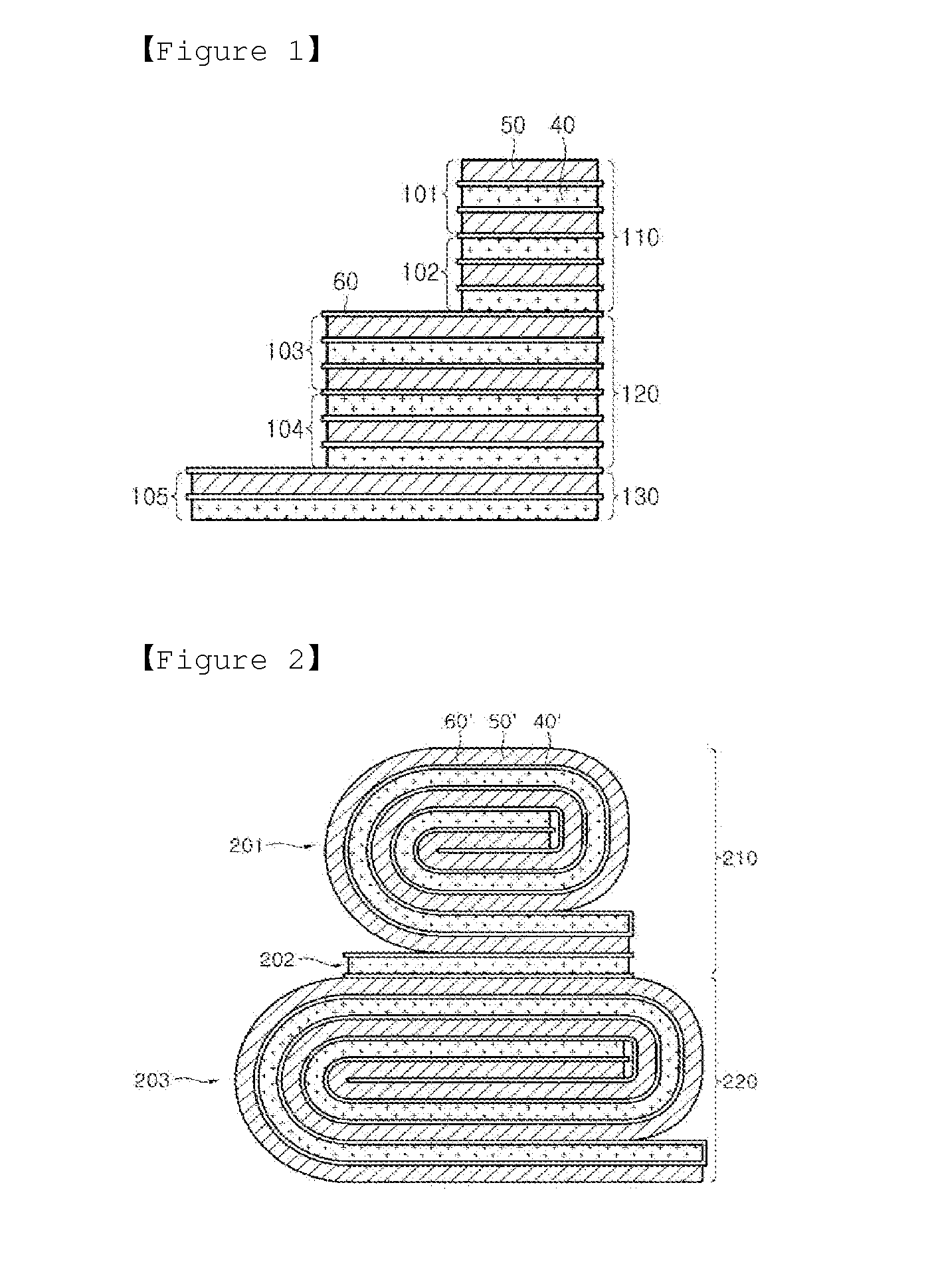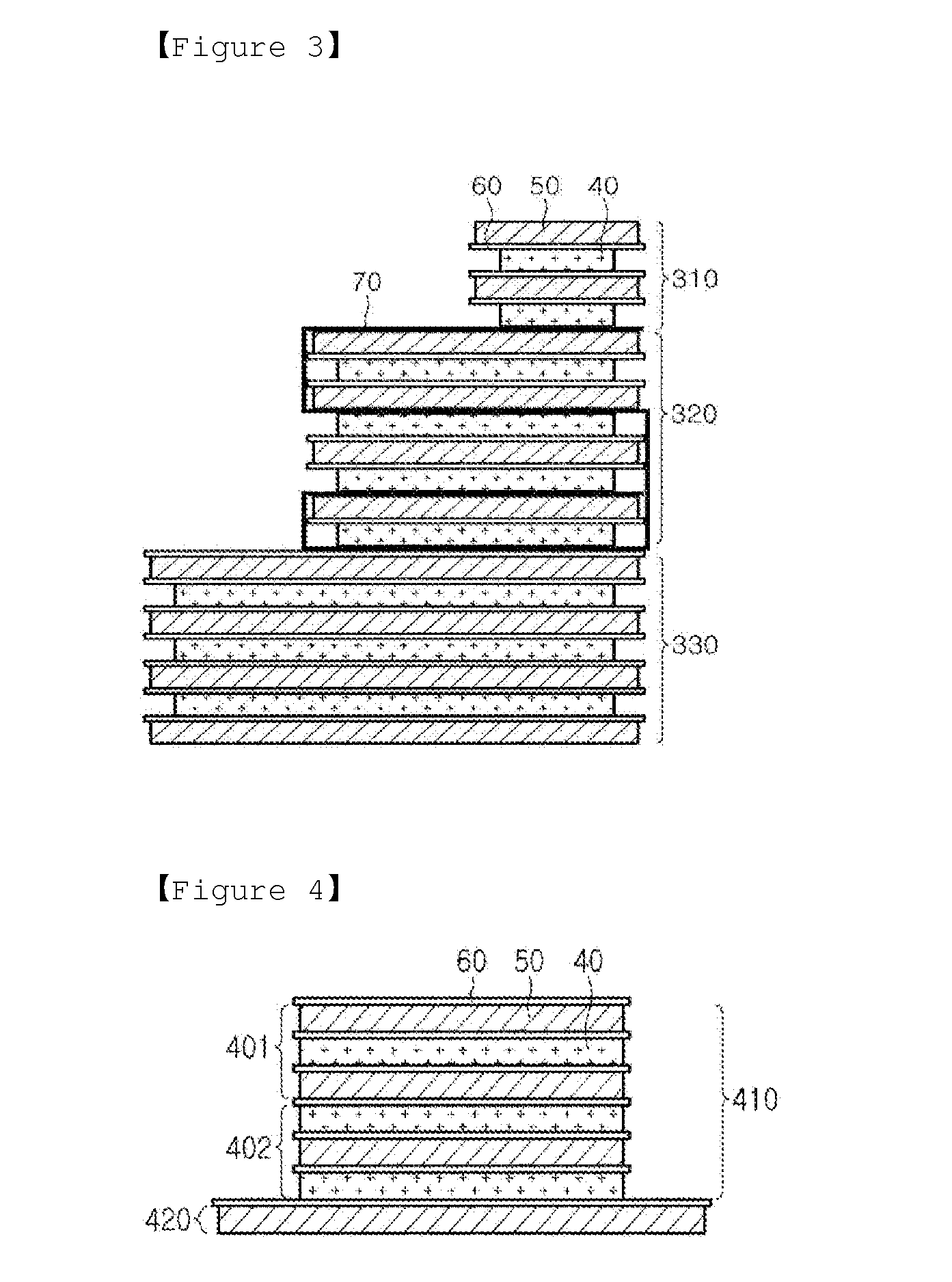Stepped electrode assembly having predetermined a thickness ratio in the interface between electrode units, battery cell and device comprising the same
a technology of electrode unit and thickness ratio, which is applied in the direction of wound/folded electrode electrodes, batteries, sustainable manufacturing/processing, etc., can solve the problems of limited design freedom, large design restrictions, and degradation of shape freedom, so as to maintain the capacitance and durability characteristics, the design freedom is very superior, and the effect of dead spa
- Summary
- Abstract
- Description
- Claims
- Application Information
AI Technical Summary
Benefits of technology
Problems solved by technology
Method used
Image
Examples
manufacturing example 1
Positive Electrode A
[0154]LiCoO2 was used as a positive electrode active material and polyvinylidene fluoride (PVDF) was used as a binder, the positive electrode active material and the binder were dissolved in N-methyl-2-pyrrolidone (NMP) and then mixed to prepare a positive electrode paste. The positive electrode paste was coated on both surfaces of an aluminum foil collector having a thickness of 15 μm, dried in an oven at 150° C., and pressed to manufacture a positive electrode A. The manufactured positive electrode A had a thickness of 100 μm, a porosity of 21%, and a reversible capacitance of 335 mAh.
manufacturing example 2
Positive Electrode B
[0155]A positive electrode B was manufactured using the same method as that in Manufacturing Example 1 except that the thickness of the positive electrode became 110 μm. The manufactured positive electrode B had a thickness of 110 μm, a porosity of 21%, and a reversible capacitance of 375 mAh.
manufacturing example 3
Negative Electrode A
[0156]A blend material of natural graphite and artificial graphite was used as a negative electrode active material, and styrene-butadiene rubber (SBR) and carboxymethyl cellulose (CMC) carbon were used as a binder. The negative electrode active material and the binder were dissolved in distilled water and mixed to prepare a negative electrode paste. After the negative electrode paste thus obtained was coated on both surfaces of a copper foil collector having a thickness of 10 μm, the copper foil collector coated with the paste was thermally treated in an oven at 100° C., and pressed to manufacture a negative electrode A. The manufactured negative electrode A had a thickness of 105 μm, a porosity of 27%, and a reversible capacitance of 348 mAh.
PUM
 Login to View More
Login to View More Abstract
Description
Claims
Application Information
 Login to View More
Login to View More - R&D
- Intellectual Property
- Life Sciences
- Materials
- Tech Scout
- Unparalleled Data Quality
- Higher Quality Content
- 60% Fewer Hallucinations
Browse by: Latest US Patents, China's latest patents, Technical Efficacy Thesaurus, Application Domain, Technology Topic, Popular Technical Reports.
© 2025 PatSnap. All rights reserved.Legal|Privacy policy|Modern Slavery Act Transparency Statement|Sitemap|About US| Contact US: help@patsnap.com



